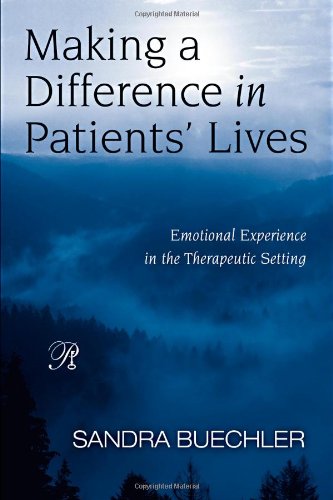

Most ebook files are in PDF format, so you can easily read them using various software such as Foxit Reader or directly on the Google Chrome browser.
Some ebook files are released by publishers in other formats such as .awz, .mobi, .epub, .fb2, etc. You may need to install specific software to read these formats on mobile/PC, such as Calibre.
Please read the tutorial at this link. https://ebooknice.com/page/post?id=faq
We offer FREE conversion to the popular formats you request; however, this may take some time. Therefore, right after payment, please email us, and we will try to provide the service as quickly as possible.
For some exceptional file formats or broken links (if any), please refrain from opening any disputes. Instead, email us first, and we will try to assist within a maximum of 6 hours.
EbookNice Team

Status:
Available4.5
24 reviews
ISBN 10: 0203894227
ISBN 13: 9780203894224
Author: Sandra Buechler
Winner of the 2009 Gradiva Award for Outstanding Psychoanalytic Publication! Within the title of her book, Making a Difference in Patients' Lives, Sandra Buechler echoes the hope of all clinicians. But, she counters, experience soon convinces most of us that insight, on its own, is often not powerful enough to have a significant impact on how a life is actually lived. Many clinicians and therapists have turned toward emotional experience, within and outside the treatment setting, as a resource. How can the immense power of lived emotional experience be harnessed in the service of helping patients live richer, more satisfying lives? Most patients come into treatment because they are too anxious, or depressed, or don’t seem to feel alive enough. Something is wrong with what they feel, or don’t feel. Given that the emotions operate as a system, with the intensity of each affecting the level of all the others, it makes sense that it would be an emotional experience that would have enough power to change what we feel. But, ironically, the wider culture, and even psychoanalysts, seem to favor "solutions" that aim to mute emotionality, rather than relying on one emotion to modify another. We turn to pharmaceutical, cognitive, or behavioral change to make a difference in how life feels. Because we are afraid of emotional intensity, we cut off our most powerful source of regulation. In clear, jargon-free prose that utilizes both clinical vignettes and excerpts from poetry, art, and literature, Buechler explores how the power to feel can become the power to change. Through an active empathic engagement with the patient and an awareness of the healing potential inherent in each of our fundamental emotions, the clinician can make a substantial difference in the patient’s capacity to embrace life.
1 Basic Assumptions about Human Emotions*
2 Empathic Recovery of Emotional Balance
Getting to Know the Elephant
The Empathic Power of Modulating Countertransferential Emotions
Mattering
Settling for Hate Rather Than Indifference
The Many Sides of the Moon
On Being Unable To Empathize
Making a Difference
3 Empathic Responses to Shame
Traumatic Shame: Shame and Anxiety
The Social Value of Shame
Shame's Companions
Countertransferential Lust for Life and the Patient's Angry Shame
The Couch, the Telephone, and E-Mail
The Power of Love To Mitigate Various Forms of Shame
Out on a Limb: Mitigating Shame by Sharing It
Guilty Shame
Remaining Me
Emotional Coloring
At the Nexus
4 Facing Painful Regret
Regret in Literature
Whose Idea of Health Prevails?
Defining Regret
Atonement
Forms of Regret
Regret for the Loss of the Unharmed Self
Regret for Acts of Omission in Treatment
Regret Understood Interpersonally and Systemically
Shame and Regret in Supervision
Regret For Acts of Commission in Treatment
Regret That Teaches Us Transformation
5 Joy as a Universal Antidote
The Feel of Joy
Avoiding Joy
Joy's Place in the Spectrum of the Emotions
Joy, Excitement, and Pleasure
The Universal Antidote
Love Anyway
Analytic Joys
“… Clearing the Sill of the World”
Transcendent Joy
Transcending Self
Finding Myself
The God in the Details
Other Analytic Joys
In Balance
Facilitating Joy
6 Grief
Winding Sheets
Treating Grief
Ordinary and Extraordinary Grief
Loss as a Continuous Experience
If Only
The Analyst's Grief
7 Empowering and Disorienting Anger
Rules of Engagement
Conceptions of Normal Anger
The Angry Analyst
Anger at the Patient vs. Anger on the Patient's Behalf
Anger in Supervision
Anger in Balance
Special Section: Training Nurturing the Capacity to Make a Difference
Thinking Analytically
Emotional Preparation for Practicing Psychoanalysis
Developing the Personal Strengths of a Psychoanalyst
8 Thinking Analytically
Analytic Listening
Pattern Recognition
Levels of Abstraction
Participant Observation
Creating and Maintaining a Private Language
Working at a Preconscious Level
The Nexus of Theory and Practice
Avoiding Splitting
Supervisory Attitudes That Nurture Analytic Development
The Internal Chorus
9 Emotional Preparation for Practicing Psychoanalysis
General Emotional Strengths
Hearing the Information in Emotional Experience
Emotional Resilience
Stamina
A Specific Strength: Emotional Preparation for Treatment's Termination
Rigors of Training and Practice
Emotional Recontextualization
Interpersonal Recontextualization
Transformation
Becoming Transformative
10 Developing the Personal Strengths of a Psychoanalyst
The Capacity to Set the Frame
The Capacity to Identify with the Analytic Enterprise
The Capacity To Bear Treatment's Limitations
The Capacity To Bear the Extent of Treatment's Impact
The Capacity To Interpret Transference
Boundary Clarity
The Capacity To Be Blamed and Blameworthy
The Capacity To Choose To Interpret Defense/Resistance
The Capacity To Say What Usually Cannot Be Said
The Capacity To Persist: Working Through
Becoming Contrast, Relational Challenge, and Catalyst
making a difference in patients lives
making a difference in a patient's life
making a difference one patient at a time
lessons from a ‘difficult patient’
a physician–patient shared decision-making model
Tags: Sandra Buechler, Patients, Emotional